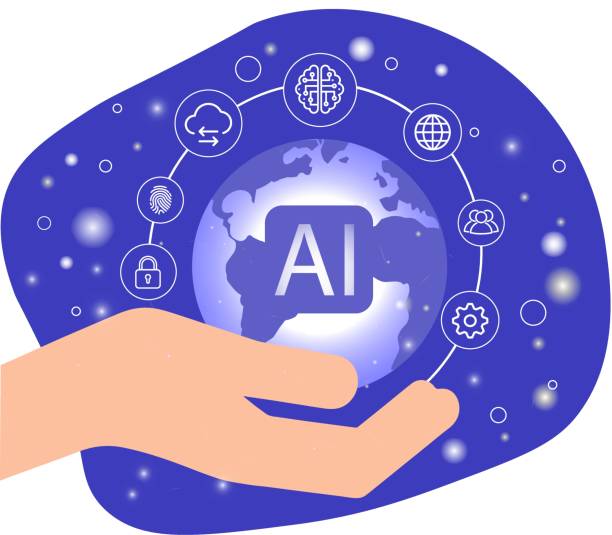A Comprehensive Introduction to On-Page SEO and Its Main Pillars
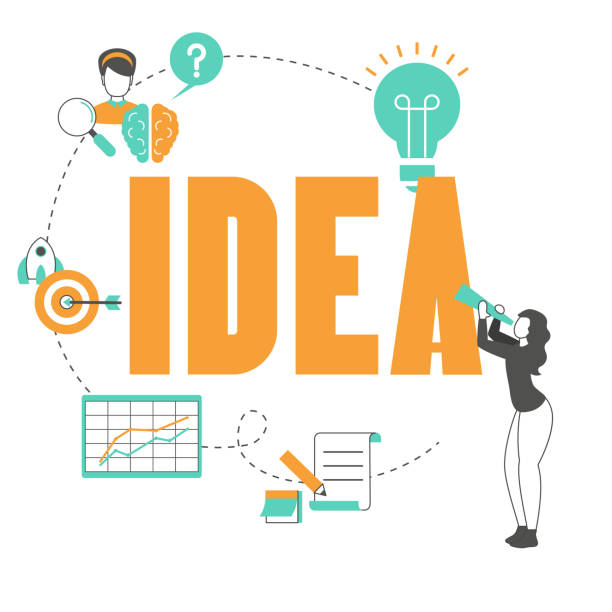
In today’s highly competitive digital world, your website’s visibility is crucially important.
This is where On-Page SEO, or Internal SEO, emerges as one of the most important #pillars_of_SEO.
SEO is not limited to external link-building; in fact, optimizing on-page elements plays a vital role in sending positive signals to #search_engines.
This educational approach helps you gain a deeper understanding of how On-Page SEO works.
The main goal of On-Page SEO is to improve the ranking of web pages in search results by optimizing their internal elements.
These elements include the page title, meta description, headings, content, images, and URL structure.
A website with strong On-Page SEO is not only more understandable to search engines but also provides a better user experience.
This optimization helps #search_engines like Google better understand your content and display it to relevant users.
Without robust On-Page SEO, even the best content might get lost amidst a flood of information.
Therefore, mastering the principles of internal optimization is absolutely essential for any website looking to gain visibility and attract organic traffic.
In the rest of this guide, we will delve into the details and effective implementation strategies of On-Page SEO in an explanatory and step-by-step manner.
Understanding these foundational concepts is your gateway to the top ranks on Google.
Did you know 85% of customers check your company’s website before any interaction?
Build a corporate website worthy of your reputation with Rasaweb.
✅ Increase credibility and customer trust
✅ Attract high-quality leads
⚡ Get free website design consultation
Discovering Strategic Keywords for On-Page SEO
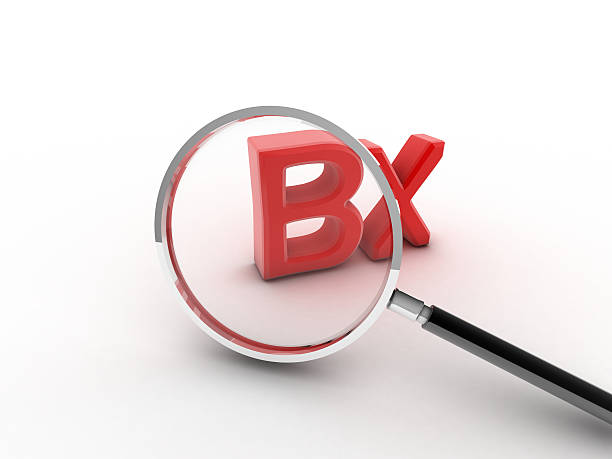
One of the most important pillars of On-Page SEO is comprehensive and precise #keyword_research.
This stage is the cornerstone of any successful On-Page SEO strategy.
You need to know exactly what your users are searching for and what terms they use to look for your information, products, or services.
This specialized stage involves identifying main keywords and long-tail keywords that align with your users’ #search_intent.
Various tools like Google Keyword Planner, Ahrefs, Semrush, or Ubersuggest can assist you in this stage.
But beyond tools, understanding user #search_intent is crucial.
Is the user looking for information (Informational Intent)? Do they intend to buy (Commercial Intent)? Do they want to go to a specific page (Navigational Intent)? Or are they looking to perform an action (Transactional Intent)? Answering these questions helps you choose the right keywords for each page and makes your On-Page SEO more effective.
After identifying target keywords, you should naturally incorporate them into your page content, title, meta description, headings, and image Alt tags without overstuffing.
This helps search engines thoroughly understand the main topic of your page.
Remember that keyword density is not important; rather, the natural and relevant use of keywords matters.
Keyword research is a continuous guidance process and should be regularly reviewed and updated to always keep pace with changes in user behavior and Google’s algorithms.
This analytical approach is the foundation of your On-Page SEO success.
Crafting Titles and Meta Descriptions to Attract Clicks
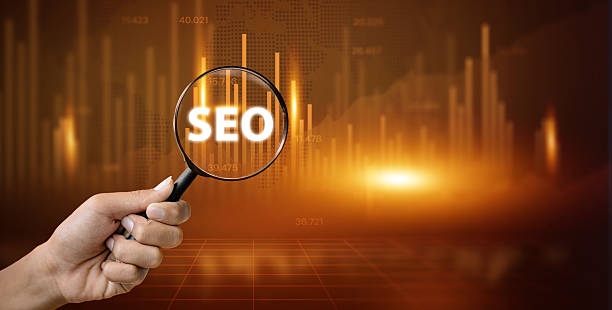
The page title (Title Tag) and meta description (Meta Description) are the first things users see in search results and play a vital role in their decision to click on your website.
Optimizing these two elements is an integral part of On-Page SEO and can directly impact your #click_through_rate (CTR).
The page title should include the main keyword of the page, be engaging and concise, and be less than 60 characters long to be fully displayed in Google results.
The meta description should also provide an attractive and persuasive summary of the page’s content, include relevant keywords, and encourage users to click.
The ideal length for a meta description is approximately 150-160 characters.
Although Google doesn’t always use your meta description and sometimes generates its own, a good meta description provides signals to Google for a better understanding of your content.
This aspect of internal optimization not only helps with ranking but also makes your content stand out among competitors.
This is an explanatory and educational approach to increasing your organic traffic.
Creative writing and the use of persuasive words are key to success in this part of On-Page SEO.
| SEO Element | Good Example (Effective) | Bad Example (Ineffective) |
|---|---|---|
| Page Title (Title Tag) | On-Page SEO: Comprehensive Guide to Improving Site Ranking in 2024 | Our Site’s Home Page About SEO |
| Meta Description | Learn step-by-step how to improve your site’s ranking on Google with this specialized On-Page SEO guide. Practical and actionable tips for On-Page SEO. |
There are various articles about SEO and websites here. We have the best content. |
| Purpose | Attract user attention, include keyword, encourage clicks, clear and relevant. | Vague, no keyword, unappealing, no call to action. |
Optimized URL Structure and Its Impact on SEO
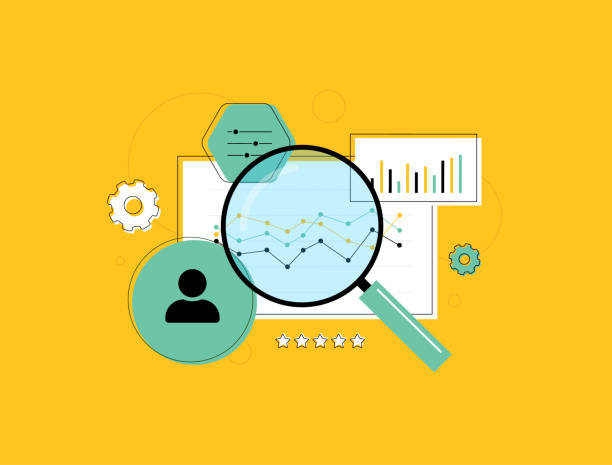
Your website’s URL structure is far more than a simple browser address; it’s a critical factor in On-Page SEO that impacts both user experience (#UX) and search engine #crawling capabilities.
An optimized URL should be concise, descriptive, include the target keyword, and be readable.
Short, meaningful URLs easily guide users and help search engines better understand the page’s topic.
For example, `yourwebsite.com/on-page-seo/guide` is much better than `yourwebsite.com/post?id=123&cat=456`.
Using keywords in the URL sends a positive signal to Google.
Also, using hyphens (-) to separate words instead of underscores (_) or spaces is an #SEO_friendly standard.
Clean and structured URLs help organize your site better and allow search engines to map out your site’s internal structure more easily.
In this explanatory section of On-Page SEO, it’s important to avoid overly long URLs or those containing incomprehensible characters.
Changing old URLs without setting up 301 redirects can also harm your SEO ranking, as it leads to 404 errors for previous links.
Therefore, pay careful attention to this element of On-Page SEO during the site planning and design phases.
This is a key guidance for improving your site’s score in the eyes of search engines.
A smart URL can significantly help search bots understand your content.
Tired of your company website not being seen as it should be, losing potential customers? Solve this problem forever with professional and effective website design by Rasaweb!
✅ Enhance brand credibility and build customer trust
✅ Attract targeted sales leads
⚡ Contact us now for a free consultation!
Correct Use of Heading Tags in Content Organization
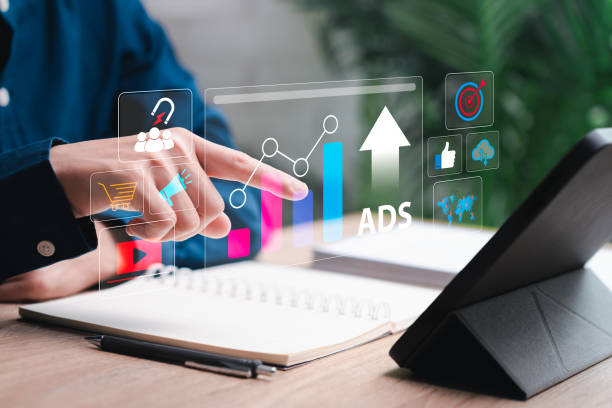
Heading tags (H1 to H6) not only improve the readability of your content but also play a crucial role in On-Page SEO and the understanding of #content_structure by search engines.
H1 is the main title of the page and should include the main keyword.
Each page should have only one H1 tag.
H2 tags are used for main headings, and H3 to H6 for their sub-sections.
This hierarchy shows search engines which sections are more important and how they relate to each other.
Correct use of headings not only helps search engines index your content better but also improves user experience (#UX).
Users can easily scan the content structure and find the information they need more quickly.
This specialized section of On-Page SEO teaches you how to make your content more appealing and understandable for both users and search engines by using headings.
For example, if you are writing an article about “Types of Coffee,” the H1 could be “A Comprehensive Guide to Coffee Types,” H2s could be “Espresso Coffee,” “Filtered Coffee,” and “Brewed Coffee,” and H3s could describe subsets of each coffee type.
Ensure that you naturally incorporate relevant keywords into your headings, but avoid overstuffing headings with keywords (Keyword Stuffing), as this can harm your ranking.
The importance of these tags in On-Page SEO should not be underestimated, as they provide a roadmap for understanding your content.
Image Optimization for Speed and Visibility

Images are an integral part of user experience and web content, but if not properly optimized, they can significantly slow down your site’s loading speed and harm your On-Page SEO.
Image optimization includes several key steps: #image_compression, choosing the right format (such as WebP, JPEG for photos, and PNG for transparent images), and using appropriate #alt_text.
Compressing images without significant quality loss increases your site’s loading speed, which is a crucial Google ranking factor.
Alt text is a textual description for images that is very important for both search engines and visually impaired users (who use Screen Readers).
This text should be descriptive and include relevant keywords, but not in a spammy way.
Also, the size and dimensions of images should be proportionate to their display space on the page so that the browser does not have to resize them.
This is an important explanatory point in the field of On-Page SEO.
Additionally, naming image files descriptively and including keywords is also recommended (e.g., `on-page-seo-guide.jpg` instead of `IMG001.jpg`).
These actions not only help improve your ranking in Google Image Search but also enhance the overall user experience.
Don’t forget that optimized images drive more organic traffic to your site through image search and strengthen your On-Page SEO.
This is essential guidance for any website that wants to leverage the full potential of its images.
The Art of Internal Linking for Improved Authority and Crawling
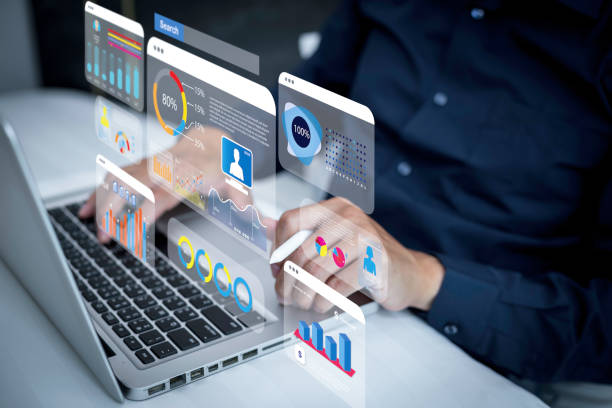
Internal Linking is one of your most powerful, yet often overlooked, tools in On-Page SEO.
Internal links are links that point from one page on your website to another page on the same website.
These links play a vital role in distributing #page_authority or “Link Juice” throughout your site and help search engines better understand the structure and importance of your various pages.
Internal linking also helps Google’s crawling bots discover new pages and index your content more efficiently.
Using descriptive and relevant #anchor_texts for internal links is very important, as this text tells search engines what the destination page is about.
For example, if you are linking to a page about “external link building,” the anchor text “methods of external link building” is much better than “click here.”
This analytical approach maximizes your potential in On-Page SEO.
Internal links also improve user experience, as they allow users to easily navigate your site and discover related information.
A smart internal linking strategy can highlight your important pages and increase their authority in the eyes of search engines.
Therefore, instead of leaving your pages isolated, connect them with a strong network of internal links to maximize your On-Page SEO power.
| Type of Linking | Example | Benefits for On-Page SEO |
|---|---|---|
| Contextual Links | Linking to a related article from within the text of another article. | Improved page authority, authority distribution, aid in topic understanding, increased user dwell time. |
| Navigation Links | Main site menus, footer, sidebar. | Easy access for users and bots, highlighting main pages, improved user experience. |
| Related/Recommended Links | The “Related articles” or “You might like” section. | Increased dwell time, reduced bounce rate, discovery of more content, improved site structure. |
Producing Valuable Content That Responds to User Needs
![]()
Content is king, and this statement holds truer than ever in the realm of On-Page SEO.
Producing #quality_content that is unique and valuable not only attracts users but also draws search engines towards you.
Your content should answer users’ questions, solve their problems, and provide comprehensive and accurate information.
This engaging yet thought-provoking content approach is key to audience interaction.
To optimize content for On-Page SEO, you should naturally use target keywords throughout the text, utilize synonyms and LSI (Latent Semantic Indexing) keywords, and present the content in a structured manner (using headings, lists, and short paragraphs).
Content length is also important; more comprehensive and in-depth content that covers all aspects of a topic usually ranks better.
However, quality always takes precedence over quantity.
Instead of filling pages with meaningless words, focus on providing real value to your audience.
Your content must be original, and copying material from others should be strictly avoided.
Effective on-page SEO ensures that your content reaches the right audience and meets their needs.
Regularly updating content and adding new information can also help maintain your ranking and content freshness.
If you have content that addresses users’ #search_intent, you’ve covered a large part of the On-Page SEO journey.
Research shows that 80% of customers trust companies with a professional website more. Does your current site inspire this trust?
With Rasaweb’s corporate website design services, solve the problem of lack of customer trust and a weak online image forever!
✅ Create a professional image and increase customer trust
✅ Attract more sales leads and grow your business
⚡ Get free consultation now
Site Load Speed, A Vital Factor in On-Page SEO
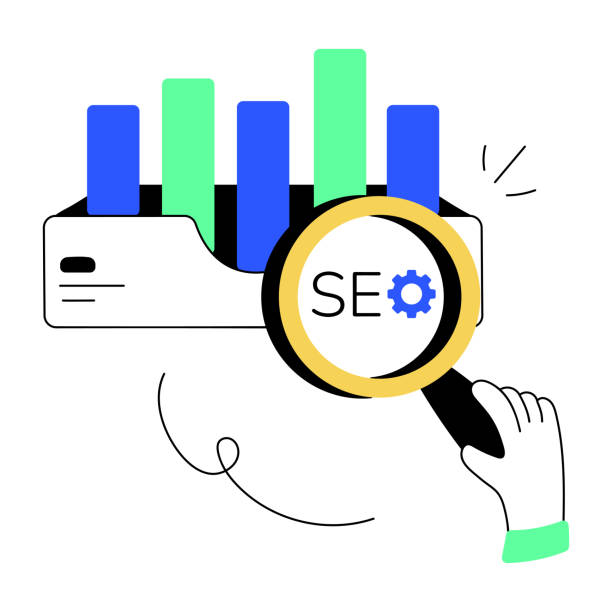
In today’s fast-paced era, Page Load Speed has become a very important ranking factor in On-Page SEO.
Google has repeatedly stated that #site_speed not only affects user experience (#UX) but is also directly involved in its ranking algorithm, especially with the introduction of Core Web Vitals.
A slow site not only frustrates users and leads to premature page abandonment (increased bounce rate) but also negatively impacts search engine crawling capabilities.
Optimizing site load speed includes image compression, browser caching, reducing the number of HTTP requests, optimizing CSS and JavaScript codes, and choosing a strong and optimized #hosting.
Also, using Content Delivery Networks (CDNs) can help deliver content from the server closest to the user, significantly increasing speed.
This is important and informative news for all webmasters that they should pay attention to.
Tools like Google PageSpeed Insights, GTmetrix, and WebPageTest can help you identify speed issues and receive optimization suggestions.
Investing in improving site speed not only benefits your On-Page SEO but also increases user satisfaction and leads to higher conversion rates.
This part of On-Page SEO requires a specialized approach to identify and resolve technical issues that can help your website on the path to success.
Continuous Monitoring and Analysis of On-Page SEO Performance
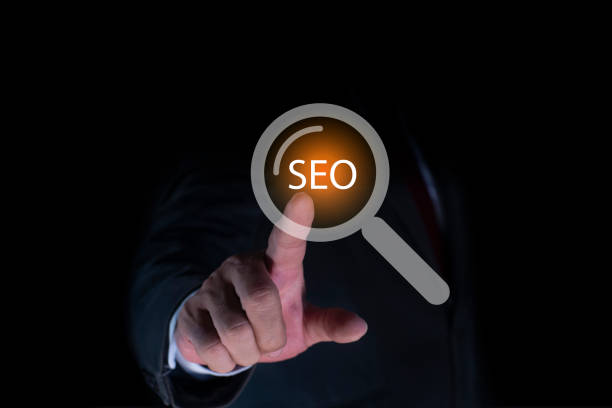
The last, but by no means least important, step in the On-Page SEO strategy is continuous monitoring and #performance_analysis.
SEO is not a static process and requires continuous updates and optimizations.
Tools like Google Analytics and Google Search Console provide valuable data to evaluate your on-page SEO performance.
Using these tools, you can identify the keywords that bring the most traffic to your site, pages that perform well, bounce rate, user dwell time, and crawling issues.
Monitoring keyword rankings, click-through rate (CTR) in search results, and checking for technical errors (such as 404 errors or server issues) are among the important activities in this stage.
Also, analyzing competitors and their On-Page SEO strategies can inspire new ideas for you.
This is an analytical and guidance approach.
By identifying strengths and weaknesses, you can improve your On-Page SEO strategy and continuously increase your site’s ranking and traffic.
Remember that Google’s algorithms are constantly changing, so what works today may need review tomorrow.
A successful On-Page SEO campaign requires commitment to continuous monitoring and optimization to stay ahead in the digital competition and achieve your business goals.
Frequently Asked Questions
| Row | Question | Answer |
|---|---|---|
| 1 | What is On-Page SEO? | On-Page SEO refers to the set of actions performed within a website (on its pages) to improve its ranking in search engine results. This includes optimizing content, site structure, and HTML code. |
| 2 | Why is On-Page SEO important? | On-Page SEO helps search engines better understand the page content and determine whether that page is relevant and valuable for users’ searches. This better understanding leads to higher rankings. |
| 3 | What is the first and most important step in On-Page SEO? | Keyword Research is the most important initial step. By finding the right keywords, targeted content relevant to user needs can be produced. |
| 4 | What is the role of the Title Tag in On-Page SEO? | The title tag is one of the most important ranking factors and should include the main keyword. This tag is displayed as the page title in search results and affects the Click-Through Rate (CTR). |
| 5 | What is the importance of the Meta Description? | The meta description does not directly affect ranking, but by providing an appealing summary of the page content in search results, it can encourage users to click, thereby increasing the Click-Through Rate (CTR). |
| 6 | Why is the use of headings (H1, H2, etc.) important in content? | Headings help structure content and improve readability for users and search engine crawlers. Using keywords in headings also helps the search engine better understand the topic. |
| 7 | What does Image Optimization in On-Page SEO include? | It includes compressing images to reduce size, using descriptive and relevant file names, and filling the Alt tag (alternative text) with relevant keywords to help search engines understand the image content. |
| 8 | What is Internal Linking in On-Page SEO? | Internal linking refers to creating links between different pages of a website. This helps distribute page authority (Link Equity), improve user experience, and assist search engine crawlers in discovering new pages. |
| 9 | Why is Page Load Speed important for On-Page SEO? | Page load speed is a direct ranking factor and significantly impacts user experience. Slow pages can lead to an increased Bounce Rate and reduced user engagement. |
| 10 | What role does quality content play in On-Page SEO? | Quality, comprehensive, unique, and valuable content for the user is the core of On-Page SEO. This content not only attracts and retains users but also sends positive signals to search engines and contributes to better rankings. |
And Other Advertising Services of Rasaweb Advertising Agency
Smart Reportage: Revolutionize sales growth with intelligent data analysis.
Smart Customer Journey Map: A fast and efficient solution for campaign management focusing on custom programming.
Smart Marketing Automation: A dedicated service for increasing website traffic growth based on marketing automation.
Smart Link Building: An innovative platform for improving customer behavior analysis using real data.
Smart Sales Automation: An effective tool for online growth with the help of attractive UI design.
And over a hundred other services in the field of online advertising, advertising consulting, and organizational solutions.
Internet Advertising | Advertising Strategy | Advertorials
Resources
- On-Page SEO Training at SEO Tools
- What is Internal Linking?
- What is On-Page SEO? – Novin
- How to Perform On-Page SEO Optimization?
? Ready to transform your business in the digital world? Rasaweb Afarin Digital Marketing Agency, specializing in responsive website design, SEO optimization, and professional social media management, assists you on the path to growth and achieving major goals.
📍 Tehran, Mirdamad Street, next to Bank Markazi, Southern Kazeroon Alley, Ramin Alley, No. 6


